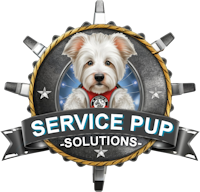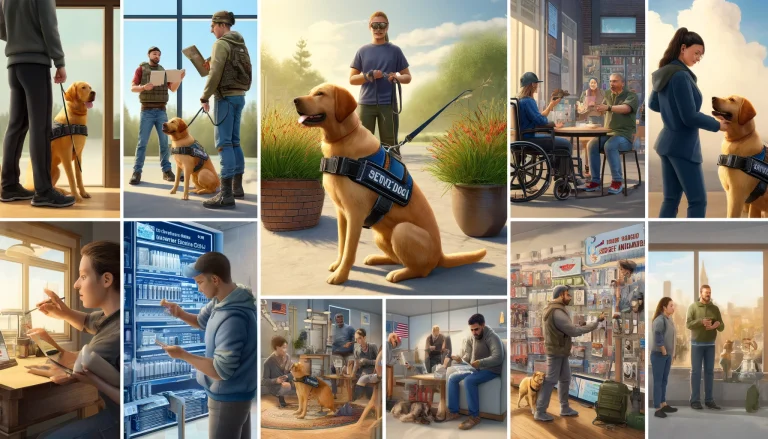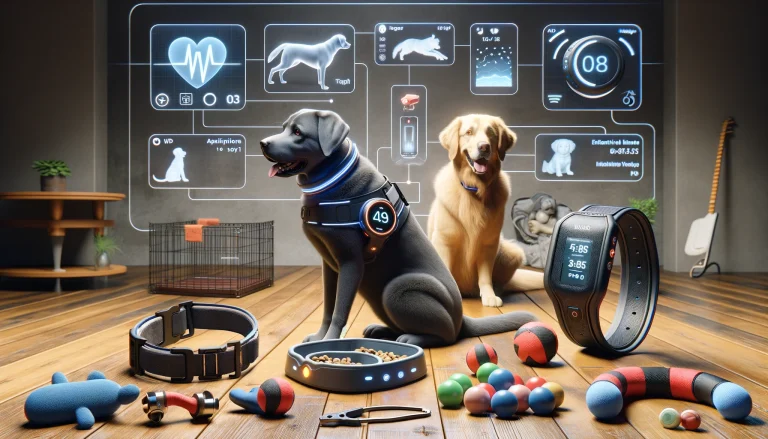Introduction
Training your service dog for seizure alerts can be a life-saving investment. Seizure alert dog training equips your dog with the skills needed to detect and respond to seizures, providing safety and peace of mind. At ServicePupSolutions.com, we understand the importance of these highly trained dogs. This comprehensive guide will explore seizure detection techniques, effective service dog training methods, and the steps to successfully train your service dog for seizure alerts.
The Importance of Seizure Alert Dogs
Seizure alert dogs play a critical role in the lives of individuals with epilepsy. These dogs can detect seizures before they occur, giving their handlers time to prepare and seek help. The benefits of having a seizure alert dog are immense:
- Early Warning: Dogs can sense seizures before they happen, allowing for timely intervention.
- Safety and Security: These dogs help prevent injuries during seizures.
- Independence: With a seizure alert dog, individuals can live more independently.
- Emotional Support: These dogs provide companionship and emotional stability.
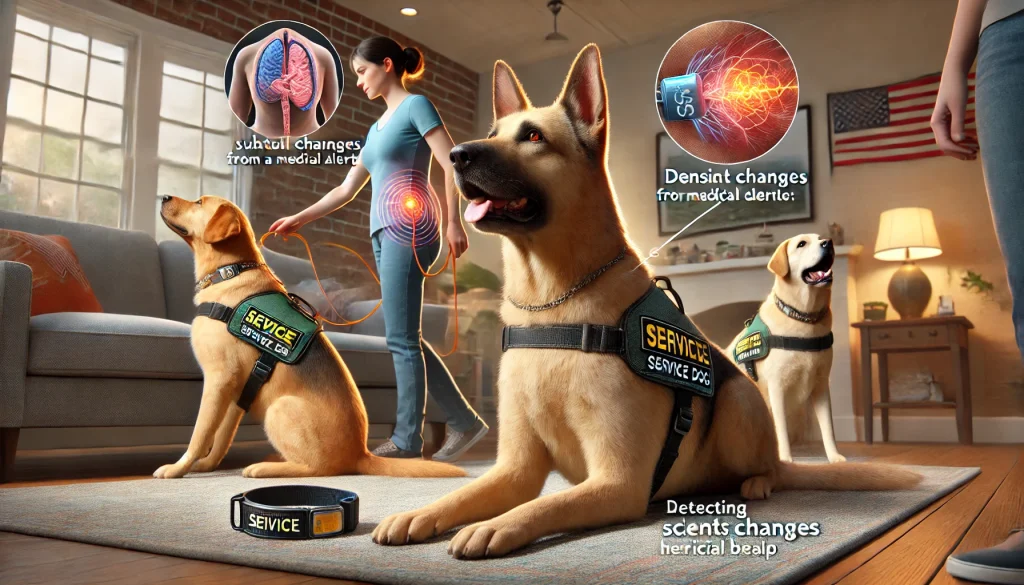
Seizure Detection Techniques
Understanding seizure detection techniques is essential for effective training. Dogs use their keen senses to detect subtle changes in their handler’s body that precede a seizure. Here are some key techniques:
Scent Detection
Dogs have an extraordinary sense of smell. They can detect changes in body odor that occur before a seizure. Training involves teaching the dog to recognize and respond to these scent changes.
Behavioral Cues
Dogs are also sensitive to behavioral changes in their handlers. Subtle signs, such as restlessness or unusual movements, can alert the dog to an impending seizure. Training focuses on reinforcing the dog’s natural ability to observe and respond to these cues.
Physiological Changes
Dogs can sense changes in their handler’s physiology, such as variations in heart rate or breathing patterns. Training the dog to recognize these changes can enhance their ability to predict seizures.
Service Dog Training Methods
Training a service dog for seizure alerts requires patience, consistency, and the right techniques. Here are some effective service dog training methods:
Positive Reinforcement
Positive reinforcement is a key element in training. Rewarding the dog for correct behavior encourages them to repeat the action. Use treats, praise, and play as rewards during training sessions.
Clicker Training
Clicker training is a popular method that uses a clicker to mark desired behaviors. The clicker sound is immediately followed by a reward, helping the dog understand which behaviors are expected.
Task-Specific Training
Task-specific training involves teaching the dog specific tasks related to seizure alerts. This includes recognizing pre-seizure cues, alerting the handler, and responding appropriately during and after a seizure.
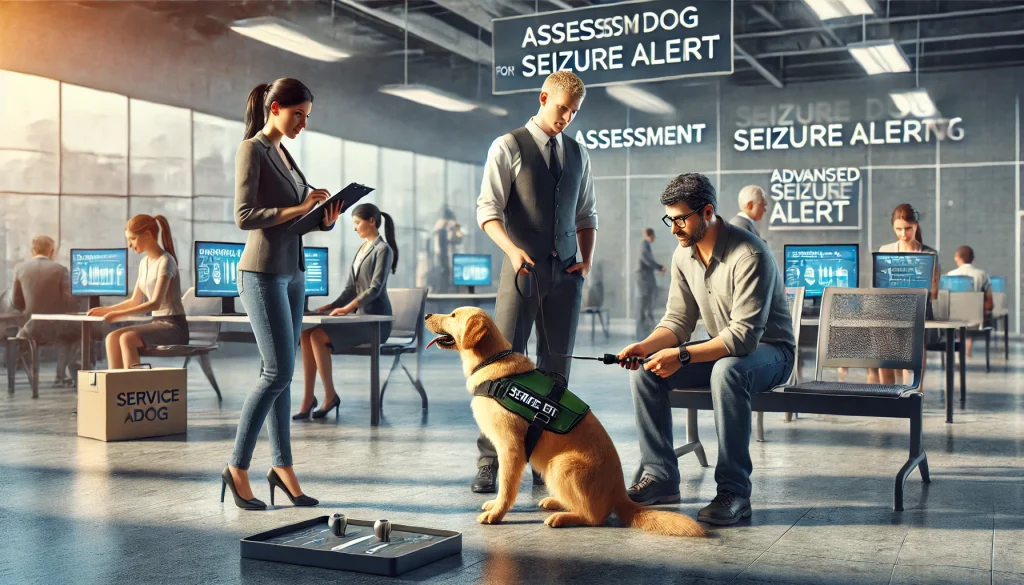
Steps to Train Your Service Dog for Seizure Alerts
Step 1: Assess Your Dog’s Suitability
Not all dogs are suitable for seizure alert training. The ideal dog should have a calm temperament, strong focus, and a willingness to learn. Assess your dog’s suitability before starting the training process.
Step 2: Begin Basic Obedience Training
Basic obedience training is the foundation for all advanced training. Ensure your dog can follow basic commands such as sit, stay, come, and heel. This obedience will make advanced training more effective.
Step 3: Introduce Seizure Scent Training
Introduce your dog to the scent changes associated with seizures. Use scent samples collected during a seizure event and reward your dog for recognizing and responding to the scent.
Step 4: Train Behavioral Cue Recognition
Observe the behavioral changes that occur before a seizure and teach your dog to recognize these cues. Reward the dog for noticing these changes and alerting you.
Step 5: Practice Physiological Change Detection
If possible, teach your dog to detect physiological changes. Use training aids that simulate changes in heart rate or breathing patterns and reward your dog for recognizing these changes.
Step 6: Combine Training Methods
Combine scent, behavioral, and physiological training methods for comprehensive seizure alert training. Ensure your dog can recognize multiple signs of an impending seizure.
Step 7: Reinforce and Maintain Training
Consistent reinforcement is crucial. Regularly practice the training exercises and reward your dog for correct behavior. This ongoing reinforcement will maintain their skills.
Self-Training Options
Self-training options are available for those who prefer to train their own dogs. ServiceDogOwners.com offers resources such as training guides, instructional videos, and support forums. These resources can help you effectively train your service dog at home.
The Importance of Pet Insurance
Investing in pet insurance is essential for service dog owners. Pet insurance ensures that your service dog receives the best possible care without financial strain. It can cover routine check-ups, emergency care, and specialized treatments. Protecting your service dog’s health is vital, as their well-being directly impacts their ability to provide support.
Essential Service Dog Products
To maximize the effectiveness of your service dog, it is important to use the right products. These products can enhance the dog’s ability to perform tasks and ensure their comfort and safety.
Service Dog Vests
Service dog vests clearly identify your dog as a working animal. These vests often come with pockets for carrying essential items and can help the public understand that your dog is not just a pet but a trained working animal.
Leashes and Harnesses
Leashes and harnesses designed for both comfort and control make it easier for the handler to guide the dog. A good harness can also help with balance and stability for the handler.
Training Tools
Training tools such as clickers, treat pouches, and training collars are essential for maintaining the skills and behaviors necessary for effective assistance.
Real Stories of Transformation
Alex’s Journey
Alex, who has epilepsy, shares his story of how his service dog, Luna, transformed his life. Luna’s ability to detect seizures before they happen has given Alex the confidence to live independently. “Luna is more than just a dog; she’s my guardian,” Alex explains.
Emma’s Experience
Emma, a young girl with epilepsy, found solace in her service dog, Max. Max’s constant presence and calming influence have helped Emma manage her symptoms and engage more fully with her family and community. “Max has made a world of difference,” Emma’s mother says. “He gives Emma the support she needs to feel safe and confident.”
The Future of Seizure Alert Dogs
The field of service dog training is continually evolving, with new techniques and technologies enhancing the capabilities of these amazing animals. As research progresses, we can expect even more sophisticated training methods and a broader range of tasks that seizure alert dogs can perform.
Conclusion
Training your service dog for seizure alerts can provide life-changing support and peace of mind. From detecting seizures early to offering emotional stability, these dogs are indispensable partners. At ServicePupSolutions.com, we are committed to educating and supporting those who benefit from service dogs, ensuring they have access to the best resources, training, and products.
By understanding the full scope of seizure alert dog training, investing in pet insurance, and utilizing the right service dog products, you can ensure that your service dog remains healthy and effective in their role. Whether you are considering professional training or exploring self-training options through ServiceDogOwners.com, the journey to a life transformed by a seizure alert dog is one filled with hope and possibility.
Searching for a way to boost your income while keeping your service dog by your side? Learn how to launch a Side Hustle or new career and increase your earnings alongside your loyal companion. Click Here to find out more and start your journey today!
